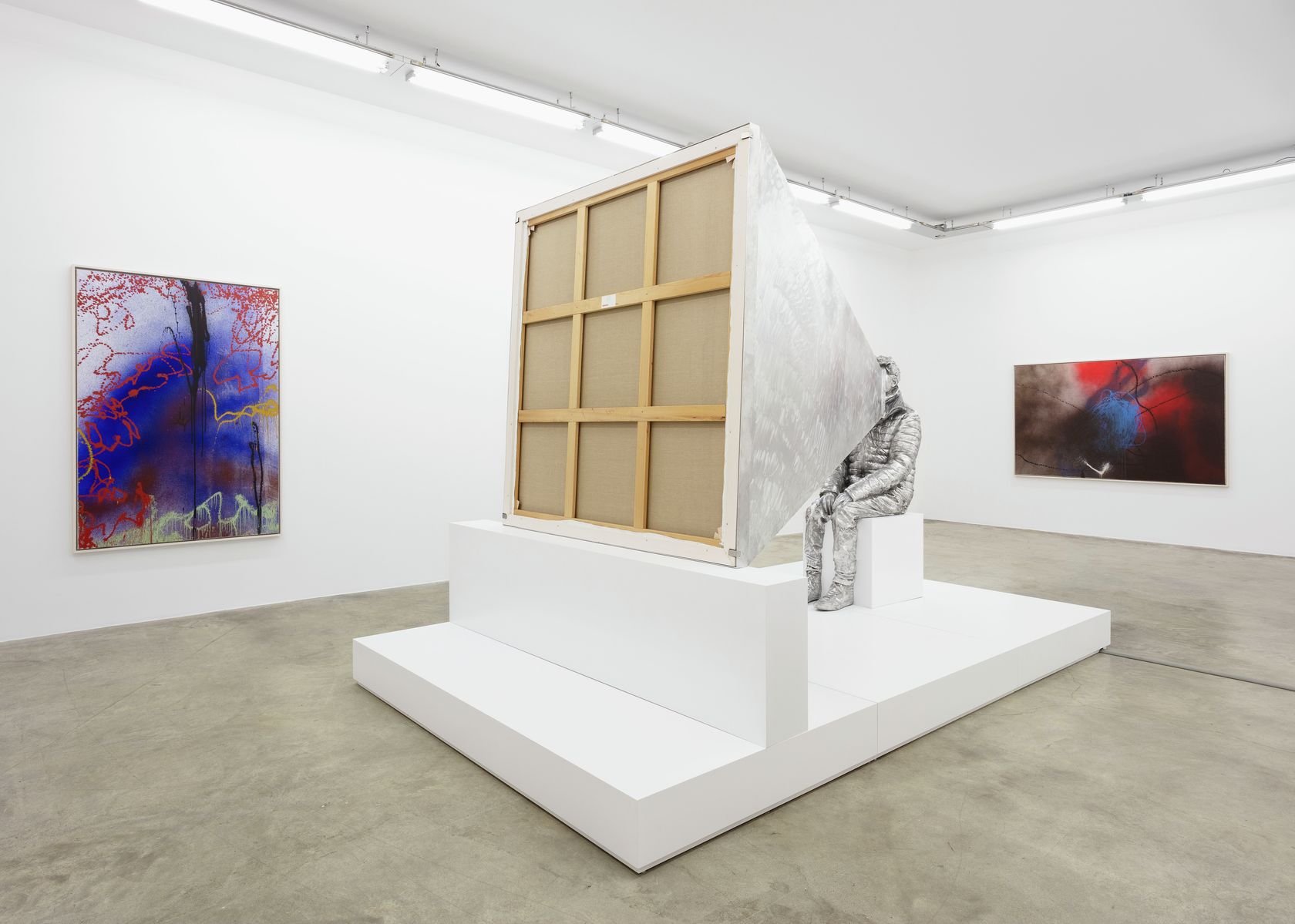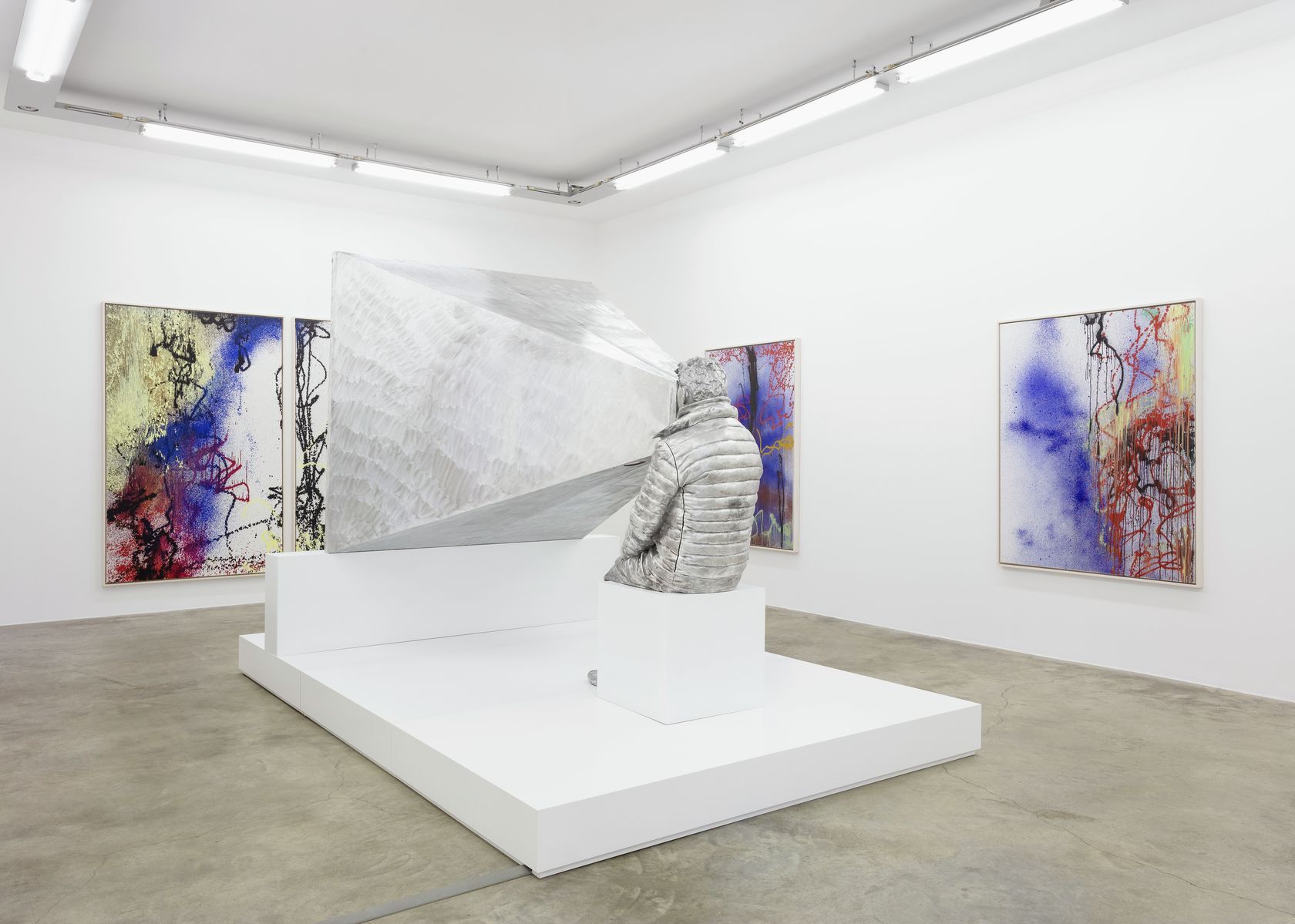-
 1/2
1/2
Abraham Poincheval , Hartung 80
June 12th — July 31st, 2021
Perrotin, Paris (FR) -
 2/2
2/2
Abraham Poincheval , Hartung 80
June 12th — July 31st, 2021
Perrotin, Paris (FR)
Abraham Poincheval (born in 1972) has become known for works that test his psychic and corporeal limits over a very long time—up to a week—in cramped places, notably Pierre at the Palais de Tokyo in 2017. Abraham Poincheval admires the work of Hans Hartung immensely and, he has said, the hallucinations provoked by some of his experiences of isolation are evocative of the Franco-German artist’s paintings from the 1970s and 1980s. The Hartung-Bergman Foundation, in collaboration with Semiose gallery, has invited Abraham Poincheval to remain in a unique sculptural chamber, mimetic of his own silhouette, in which a single work by Hans Hartung sits in his line of vision. He will look at it continuously, for seven entire days. The artist will not know which work it is until the performance.
Hartung’s painting will therefore become the longest continuously observed work by an individual in the history of art. This, in a cultural context in which the average spectator lingers in front of a museum piece no longer than one minute... Hartung sometimes created work within a very short timeframe. The duration of creation will, thus, be transcended by the timespan of an extraordinarily long gaze.
The sculpture made for the Poincheval’s containment with the Hartung work will be visible to the public for the duration of the exhibition.
Scientific researchers will analyze the “aesthetic experience” Abraham Poincheval undergoes, as well as his states of consciousness altering before the canvas. By using a electroencephalography, it will be possible to record the artist’s brain activity. A conference on the “perception of art” will be organized on July 1st at Perrotin gallery, combining human sciences and neurosciences, with the participation of Yves Sarfati (a psychiatrist and professor at the Université de Paris), Sylvie Royant-Parola (a psychiatrist specializing in sleep), Thomas Rabeyron (clinical psychologist and professor of clinical psychology and psychopathology at the Université de Lorraine). Abraham Poincheval will also be observed by art historians Pierre Wat (professor at Université Paris I Panthéon-Sorbonne) and Laurence Bertrand Dorléac (professor at Sciences-Po Paris). A seminar about the performance will be held by Hartung-Bergman foundation later this summer.
The concept for the chamber has been designed by the agency “Pièces Montées,” a recurrent collaborator of Abraham Poincheval. With the support of the Arts & Sciences Chair of the École Polytechnique, the École des Arts Décoratifs-PSL and the Fondation Carasso. With the support of Compumedics.